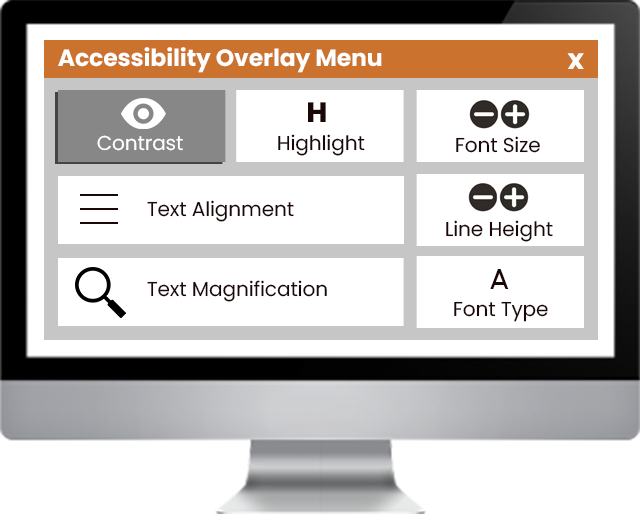Digital accessibility makes the world a better place. Removing barriers that divide a large portion of our population, creates a more united and inclusive world. Beyond this, there are also benefits for organisations who put accessibility at the forefront.
What is digital accessibility?

Nobody would want their independence taken from them. Implementing accessibility on digital platforms is just one way of ensuring that does not happen. Digital accessibility means giving equal access to online information and services. When digital accessibility is achieved, it empowers all users to access and use online services without the need for assistance.
Accessibility isn’t a one-size-fits-all solution, as everyone accesses the internet in different ways. For example, some people may use assistive technology to navigate a website, while others could struggle to consume large amounts of content.
Online accessibility also helps those who don’t consider themselves disabled. It can assist those with a temporary illness, such as a broken arm, or even someone just needing to watch a video with subtitles, so they don’t disturb others.
The benefits of digital accessibility
Beyond it being the morally right thing to do, there are also many additional benefits for organisations who take an accessible approach.
Online accessibility can boost your website’s audience and sales

At least one billion people worldwide (around 15% of the population), experience some form of disability. In the UK, this equates to 1-in-5 of us. These figures do not include those with temporary and situational disabilities.
Out of these people, they are much more likely to spend their hard-earned money on a website they can easily access. In fact, a study found that around 71% of disabled people who experienced difficulty accessing a website left and didn’t return.
It isn’t just those with disabilities who may not use your website if it is found to be inaccessible. Many millennials have high expectations for organisations to take a stand on values and may walk away from those who aren’t inclusive.
Accessibility improves the user experience for everyone
All users would benefit from a website that is developed to be accessible and user-friendly.

Designing your site in an accessible way improves your website as a whole by:
- Streamlining a website’s navigational flow.
- Providing greater ease of use.
- Giving text clarity and improving readability.
- Enhancing your website’s responsiveness, allowing it to adapt to varying screen sizes and differing types of devices.
Becoming accessible improves search engine optimisation (SEO)

Good SEO can achieve a lot for your business. This can be increased search engine exposure or generating more web traffic. You’ll be pleased to hear that implementing digital accessibility helps in improving SEO rankings.
WebAIM has a useful article to tell you how accessibility and SEO go hand-in-hand.
Staying compliant may help you to avoid a costly lawsuit

It’s important to be aware that by not offering an accessible service may mean you could end up in trouble. A company can be sued for not complying with the UK’s Equality Act 2010 or the Public Sector Accessibility Legislation. Even well-known names such as Netflix, Nike, and Domino’s have faced the consequences.
This would have both a financial impact on your business and may damage your reputation.
How accessible are your digital platforms?
In a 2024 report from WebAIM, they found that out of the top 1 million websites that they evaluated, 95.9% of homepages had detected Web Content Accessibility Guidelines (WCAG) failures.
To prevent your becoming one of these statistics, and to embrace all of the positive attributes that accessibility can provide to your organisation, it’s important to have a website accessibility test. This test can be conducted for free with HeX.
Avoid using accessibility overlays on your website
If you’re thinking about building an accessible website, or you’re looking for best accessibility practices, there’s a strong likelihood that you’ve come across the use of accessibility toolbars. These are also known as ‘accessibility overlays’. Our guide looks into why they are bad for the accessibility of your website.

